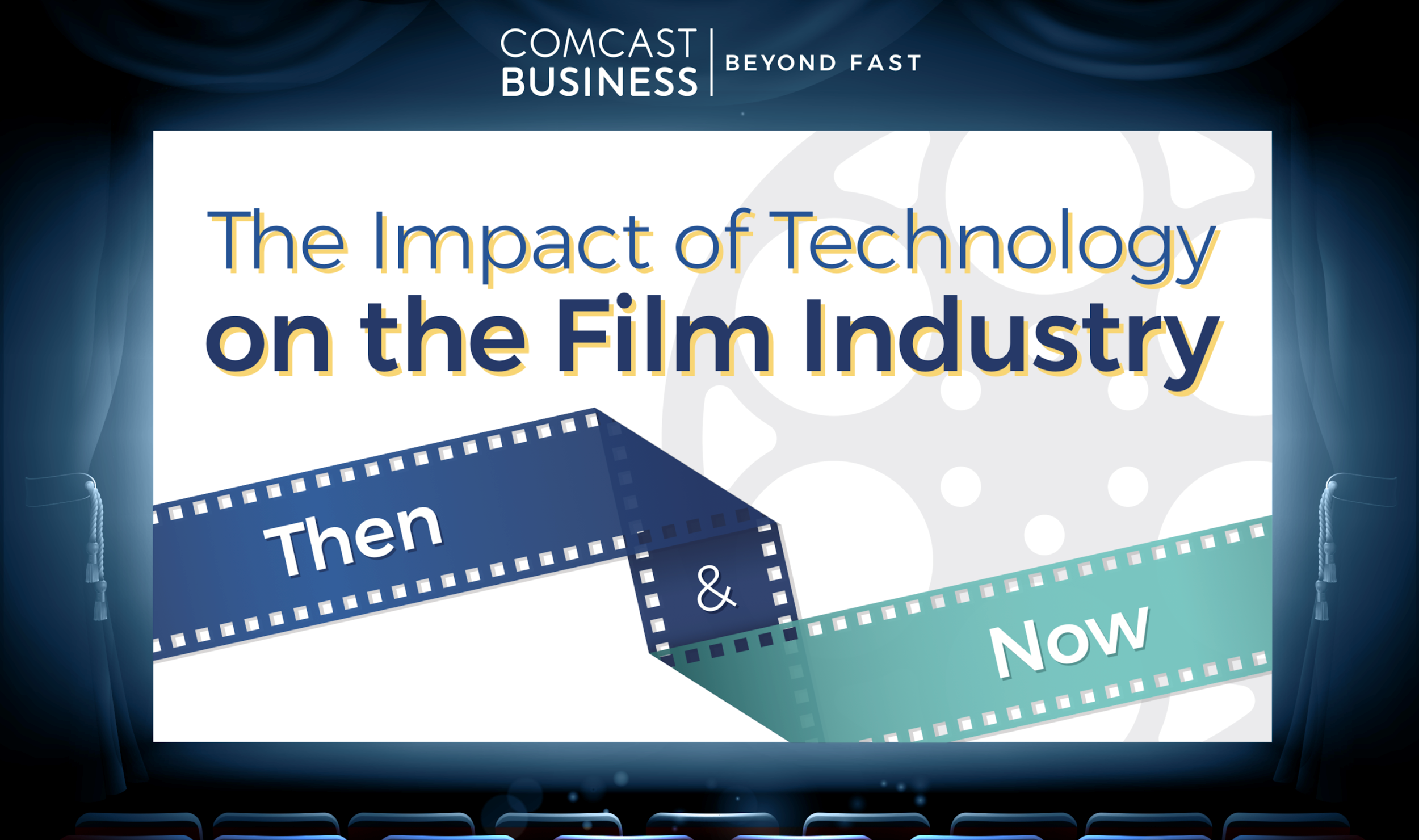No different from other industry sectors (and from life in general, as a matter of fact), technological development has revolutionized the film industry in all its aspects: from filming to editing and post-production, devising a soundtrack, promoting and distributing, all the way to watching movies. Never before has high-tech innovation been in the service of art as clearly as shown by the evolution of the movie and television industry.
Throughout the last century, the way from black-and-white movies with low-quality images and no sound, to high-definition and 3D films using deepfake voice technology, has been traversed rapidly by leveraging engineering breakthroughs.
Technology has made everybody’s life easier, from the movie crew to the audiences. Consider the lighter, digital and digital-back cameras that can capture multiple takes, the advanced software for film-editing, the use of the cloud to streamline the joint work of filmmakers and production teams set in different parts of the world, marketing campaigns that can deliver content online, streaming services allowing viewers to watch their favorite movies at any time, anywhere.
This should give you a very brief idea of how technology underpins the fast-paced move forward of the film industry; for a more detailed perspective of the advancements, you can take a look at the Impact of Technology on the Film Industry infographic created by Comcast.
Emerging Technologies Disrupting The Film Industry
The list below comprises technological innovations that are revolutionizing the film industry. I have a hunch that after reading it, you will appreciate even more the fact that you’re living in the 21st century, and that you have the opportunity to witness some ideas previously considered Sci-Fi becomes real.
1- Glass-free 3D technologies
These have been used to some extent by televisions, tradeshows, and development labs, but their application in the film industry is brand new, and it is predicted to bring about significantly better picture quality with 3D effects.
Glass-free 3D aims to take the audience past the passive viewer’s status and to make them part of the experience, so it is certainly among the emerging technologies revolutionizing the film industry. If you are wondering what you can expect from it, in concrete terms, consider a sequel to David Cameron’s 2009 Avatar, for which Cameron has already signed a deal with a company specialized in 3D technology.
2- Virtual reality (VR)
Just like 3D, VR is meant to boost viewer engagement, bringing them onto the set, allowing them to get a better grasp of the context where characters develop. This is like flipping the switch from just watching events unfolding, to actually taking part in them. For the time being, we are still a few years off from the systematic use of VR in the film industry, and the time could be put to a good use if directors pondered its instrumentality for the manifestation of their creative ideas.
Respeecher’s voice synthesis technology can be a valuable component of VR in movies because our language agnostic tech allows the flexibility of voice recording in one language while presenting it to the audiences can be done in whatever language makes it more deeply engaging. Voice cloning technology will in time become part and parcel of VR.
3- Augmented reality (AR)
The development of AR follows a similar path with VR, but we are one step closer to its regular use in movie making. It offers audiences an enhanced experience by superimposing images onto real objects and entities.
With the help of technical advancements, AR will become more interactive and personalized. A telling example of AR is Pokémon Go which asks users to connect the reality of their phones with the “real world reality” where they must find the pokemons.
4- AI voice synthesis
Sound designers can leverage AI technology to pair silent footage with perfectly fit sound effects. AI bots can also be taught to add sound to visual effects, by feeding the computer systems lots of various combinations of sounds and actions. Bots’ training involves learning associations between sounds, actions, and contextual features such as surfaces or distances between objects.
This will be of great help to low-budget filmmakers, allowing them to use well-tailored sound effects in a very efficient way, i.e., with minimal time investment. Respeecher’s voice cloning technology can be used to widen the scope of sounds that bots are trained with, by example, bringing back voices of actors who have passed away, or adding historical voices.
5- Internet of Things (IoT)
According to Business Insider Intelligence, the number of IoT devices installed around the world by 2026 will exceed 64 billion. In financial terms, consumers are expected to spend almost $15 trillion on IoT devices, solutions, and supporting systems. Therefore it is a reasonable assumption that big data, gathered from IoT, will indeed impact how movies are made, driving a shift from creator-driven to audience-driven content.
Both the voice-driven functionality and the visual components will contribute to an increasingly immersive experience of the audience. Some additional effects for the film industry are enhanced productivity, and reduced operating costs.
6- 3D printing
Among the important films that have used 3D printing lately, we mention Fast & Furious 6 (the full-scale exterior of a tank), or Ex Machina and Avengers: Age of Ultron (the spaceship sets). It counts as an emerging technology revolutionizing the film industry from the perspective of production design, prop and set.
The technology has been used to turn filmmakers’ digital visions into fine-grained 3D models which are significantly cheaper than the ‘real thing’. Just like AI sound design, 3D printing is expected to become more and more accessible, and not much time will pass until even low-budget filmmakers will have the opportunity to benefit from it.
Conclusion
After going through the list of emerging technologies revolutionizing the film industry, the bottom line seems to be that the advancements in film technology make a considerable contribution to more spectacular movies, while at the same time making production work easier. Sounds like a beneficial development, doesn’t it?
The use of cloned voices by means of deepfake voice technology is an integral part of these emerging technologies for the film industry. Cloned voices that cannot be distinguished from the original actors’ voices are a match made in heaven for filmmakers because resurrecting voices from the past or changing actors while keeping the same voice streamlines the ‘long and winding road’ of movie production.































































